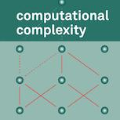Current network applications, such as utility networks (gas, water, electricity, and 4G/5G), the Internet of Things (IoT), social networks, and supply chains, are all based on binary state networks. Reliability is one of the most commonly used tools for evaluating network performance, and the minimal path (MP) is a basic algorithm for calculating reliability. However, almost all existing algorithms assume that all undirected arcs are homogeneous; that is, the probability of an arc from nodes a to b is equal to that from nodes b to a. Therefore, based on MPs, the binary-addition-tree algorithm (BAT), and the inclusion-exclusion technique (IET), a novel recursive inclusion-exclusion technology algorithm known as recursive BAT-based IET (RIE) is proposed to solve the heterogeneous-arc binary-state network reliability problem to overcome the above obstacles in applications. The computational complexity of the proposed RIE is analyzed using an illustrative example. Finally, 11 benchmark problems are used to verify the performance of RIE.
翻译:目前网络应用程序,如通用网络(气、水、电和4G/5G)、物联网(IoT)、社交网络和供应链,都以二元状态网络为基础。可靠性是评价网络性能的最常用工具之一,而最低路径(MP)是计算可靠性的基本算法。然而,几乎所有现有的算法都假定所有非定向弧都是同质的;即节点a至b的弧概率与节点b至a的弧值相等。因此,根据MPs、二元添加-树算法(BAT)和包容-排除技术(IET),一种新型的循环包容-排除技术算法,称为循环BAT-基于IET的IET(RIE),被提议解决混合-弧-二元状态网络可靠性问题,以克服应用中的上述障碍。利用一个示例分析拟议的REE的计算复杂性。最后,11个基准问题被用来核查REE的性能。




